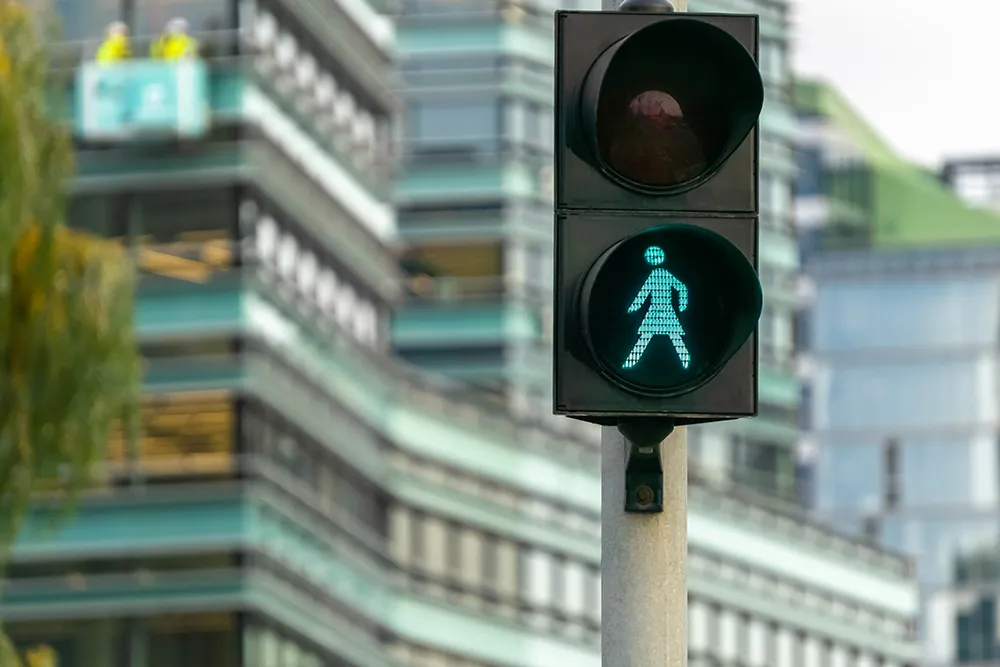The US Department of Transportation's (DOT) National Highway Traffic Safety Administration (NHTSA) is to begin taking steps to enable vehicle-to-vehicle (V2V) communication technology for light vehicles. This technology would improve safety by allowing vehicles to communicate with each other and ultimately avoid many crashes altogether by exchanging basic safety data, such as speed and position, ten times per second.
DOT research indicates that safety applications using V2V technology can address a large
February 4, 2014
Read time: 3 mins
The 324 US Department of Transportation's (DOT) 834 National Highway Traffic Safety Administration (NHTSA) is to begin taking steps to enable vehicle-to-vehicle (V2V) communication technology for light vehicles. This technology would improve safety by allowing vehicles to communicate with each other and ultimately avoid many crashes altogether by exchanging basic safety data, such as speed and position, ten times per second.
DOT research indicates that safety applications using V2V technology can address a large majority of crashes involving two or more motor vehicles. With safety data such as speed and location flowing from nearby vehicles, vehicles can identify risks and provide drivers with warnings to avoid other vehicles in common crash types such as rear-end, lane change, and intersection crashes. These safety applications have been demonstrated with everyday drivers under both real-world and controlled test conditions.
"Vehicle-to-vehicle technology represents the next generation of auto safety improvements, building on the life-saving achievements we've already seen with safety belts and air bags," said US Transportation Secretary Anthony Foxx. "By helping drivers avoid crashes, this technology will play a key role in improving the way people get where they need to go while ensuring that the US remains the leader in the global automotive industry."
Responding to the announcement, Scott F. Belcher, president and CEO of the Intelligent Transportation Society of America (560 ITS America), said: “This announcement represents a significant step forward in advancing the next generation of vehicle safety and automotive innovation, and is the result of years of collaboration between the transportation and high-tech industries and our federal, state and local partners,” continued Belcher, who called it “a safety leap exceeding even seat belts and air bags.”
“Thanks to the strong commitment by US DOT and automotive leaders, and years of investment by countless innovators and industry pioneers, the vision of ‘talking’ cars that avoid crashes is well on the way to becoming a reality. And we’re not just talking about cars talking to cars, but about cars talking to bikes, trucks talking to motorcycles, and even buses talking to pedestrians. This promises to significantly reduce the number of deaths and injuries on our nation’s roads while unleashing a new wave of innovation from advanced traffic management systems and smart mobility apps to real-time traffic, transit and parking information. We look forward to working with US DOT, the automakers, and high-tech industry to ensure that issues such as security and privacy are addressed as we work toward full scale adoption of this life-saving technology.”
The4944 American Association of State Highway and Transportation Officials (AASHTO) also praised the move. Former AASHTO president and 1688 Michigan Department of Transportation Director Kirk Steudle, a national expert and leader in traffic safety and connected vehicle technology, said that "today's announcement by NHTSA officials is a positive step for our ultimate goal of delivering the safest and most efficient transportation system imaginable."
Steudle added, "This is a significant announcement for the future of safe mobility and a day that will lead to great reductions in traffic fatalities. USDOT should be commended for its leadership and vision."
DOT research indicates that safety applications using V2V technology can address a large majority of crashes involving two or more motor vehicles. With safety data such as speed and location flowing from nearby vehicles, vehicles can identify risks and provide drivers with warnings to avoid other vehicles in common crash types such as rear-end, lane change, and intersection crashes. These safety applications have been demonstrated with everyday drivers under both real-world and controlled test conditions.
"Vehicle-to-vehicle technology represents the next generation of auto safety improvements, building on the life-saving achievements we've already seen with safety belts and air bags," said US Transportation Secretary Anthony Foxx. "By helping drivers avoid crashes, this technology will play a key role in improving the way people get where they need to go while ensuring that the US remains the leader in the global automotive industry."
Responding to the announcement, Scott F. Belcher, president and CEO of the Intelligent Transportation Society of America (
“Thanks to the strong commitment by US DOT and automotive leaders, and years of investment by countless innovators and industry pioneers, the vision of ‘talking’ cars that avoid crashes is well on the way to becoming a reality. And we’re not just talking about cars talking to cars, but about cars talking to bikes, trucks talking to motorcycles, and even buses talking to pedestrians. This promises to significantly reduce the number of deaths and injuries on our nation’s roads while unleashing a new wave of innovation from advanced traffic management systems and smart mobility apps to real-time traffic, transit and parking information. We look forward to working with US DOT, the automakers, and high-tech industry to ensure that issues such as security and privacy are addressed as we work toward full scale adoption of this life-saving technology.”
The
Steudle added, "This is a significant announcement for the future of safe mobility and a day that will lead to great reductions in traffic fatalities. USDOT should be commended for its leadership and vision."








